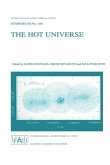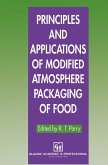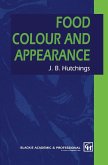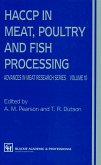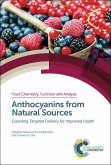1 Predicting acceptability from flavour data.- Abstract.- 1.1 Introduction.- 1.1.1 Procedure considerations.- 1.1.2 Design considerations.- 1.1.3 Analysis considerations.- 1.1.4 Practical considerations.- 1.2 Examples of the multiple regression approach.- 1.2.1 Predicting hedonic values of raw carrot texture from sensory descriptive attributes.- 1.2.2 Predicting hedonic values of cooked rice from sensory descriptive attributes.- 1.2.3 Predicting strawberry jam preference from sensory and analytical variables.- 1.3 Conclusion.- References.- 2 Sensory analysis of flavours.- Abstract.- 2.1 Introduction.- 2.1.1 Definition.- 2.1.2 Quality: two sources of variables.- 2.2 The sensory instruments.- 2.3 Psychology.- 2.4 Psychophysics.- 2.5 Physiology: oral, nasal, retronasal and trigeminal perception.- 2.6 Sensory analysis.- 2.6.1 The possibilities.- 2.6.2 The tool box.- 2.6.3 Quality of judgement.- 2.6.4 Scales.- 2.6.5 Methods.- 2.6.6 Sensory technique.- References.- 3 Food acceptability.- Abstract.- 3.1 Introduction.- 3.2 Tools for measuring and understanding product acceptance and perception.- 3.3 Measuring acceptance.- 3.3.1 Environment and context.- 3.3.2 Products being considered.- 3.3.3 Product associations.- 3.3.4 Availability and familiarity.- 3.3.5 Variety.- 3.3.6 Interviewer influence.- 3.4 Methods for exploring underlying causes of acceptance.- 3.4.1 Regression modelling.- 3.4.2 Trade-off modelling and conjoint analysis.- 3.4.3 Behavioural modelling.- 3.4.4 Information-processing-network approaches.- 3.5 Conclusions.- References.- 4 Psychology and psychophysiological measurements of flavour.- Abstract.- 4.1 Introduction.- 4.2 The physiological study of eating behaviours.- 4.3 Psychophysiological techniques.- 4.4 R. W. Moncrieff.- 4.5 Averaged evoked potentials.- 4.6 Psychophysiology, EEG and brain electrical activity mapping.- 4.7 Neuropsychology and the cerebral cortex.- 4.8 The Warwick olfaction research methodology.- 4.8.1 The quantification of BEAM maps.- 4.9 A BEAM investigation using infants and a longitudinal adult study.- 4.10 Event-related potentials and food odours.- 4.11 Conclusions.- References.- 5 Matching sensory and instrumental analyses.- Abstract.- 5.1 Introduction.- 5.2 Goals.- 5.2.1 Understanding causal relationships.- 5.2.2 Finding calibration and prediction models.- 5.2.3 Application in quality assurance and management.- 5.3 Methods.- 5.3.1 Sensory methods.- 5.3.2 Instrumental methods.- 5.3.3 Computers and data analytical methods.- 5.4 Philosophy.- 5.4.1 To what extent can flavour be measured?.- 5.4.2 Philosophical concepts of relevance in flavour assessment.- 5.5 Qualimetrics.- 5.5.1 Why qualimetrics?.- 5.5.2 Definitions.- 5.5.3 Multivariate psychophysics.- 5.5.4 Multivariate data analysis.- 5.5.5 Multivariate calibration and prediction.- 5.6 Examples.- 5.6.1 Goals.- 5.6.2 Materials and methods.- 5.6.3 Results: rapid, relevant and reliable methods (goal 1).- 5.6.4 Results: use of prior knowledge (goal 2).- 5.6.5 Discussion.- 5.7 Conclusions.- Acknowledgement.- References.- 6 Product optimization.- Abstract.- 6.1 Introduction.- 6.1.1 Optimization procedure.- 6.1.2 Definition of the desired response.- 6.2 Applications of response surface optimization.- 6.2.1 Thiamine and SO2 content in quality white wine production.- 6.2.2 Optimization of wine fermentation by using immobilized yeast cells.- 6.2.3 Optimization of Provolone cheese quality (preference) by sensory descriptive analysis.- 6.3 Conclusion.- References.- 7 Software for data collection and processing.- Abstract.- 7.1 Introduction.- 7.2 Software for data collection.- 7.3 Software for data analysis (traditional statistical analysis).- 7.4 Software for data exploration.- 7.5 The future.- Acknowledgements.- References.- 8 Citrus breeding and flavour.- Abstract.- 8.1 Introduction.- 8.2 Botanical considerations.- 8.2.1 Taxonomic systems.- 8.2.2 Breeding problems.- 8.3 Breeding of citrus flavours.- 8.3.1 Sensory analysis.- 8.3.2 Nonvolatile flavours.-...
Hinweis: Dieser Artikel kann nur an eine deutsche Lieferadresse ausgeliefert werden.
Hinweis: Dieser Artikel kann nur an eine deutsche Lieferadresse ausgeliefert werden.



